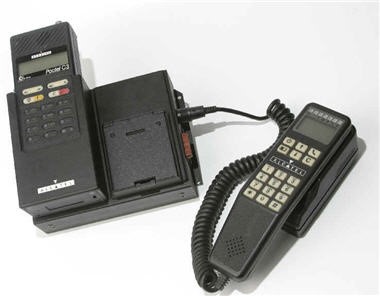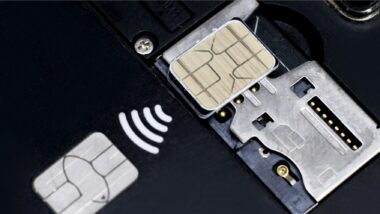
< 3-minute read.
During my internship at Alcatel Mobile France in the 90s, I remember a colleague bent on his desk while configuring a rather big & heavy first-generation mobile phone in order to provision and activate the operator’s connection parameters deep into the device software.

This time has now gone…
Fortunately, removable SIM cards came about…
Activating a SIM has become a familiar habit to more than 5.1 billion unique mobile subscribers worldwide in 2021 (source: GSMA Intelligence – February 2021). In 2020, according to the Trusted Connected Alliance, 4.8 billion SIM cards have been sold, making SIM cards the most widely and commonly used IT elements in the world (vs. 1.4 billion smartphones shipped).
With eSIM embracing digital transformation in the telecom sector, the SIM industry’s ecosystem can offer 3 main benefits:
- Welcome all device form factors thanks to miniaturization, proven standardization and interoperability
- Provide independent mobile connection to devices (no need to be tethered to a smartphone for being connected).
- Provide easy connectivity set-up to devices (no need to insert a removable SIM card)
As eSIM-ready consumer device deployments gather momentum, overall consumer eSIM deployments are forecast to reach 920 million by 2025 (source: ABI Research – September 2020).
So, stick with me here.
Four generations of mobile networks after the 1G, the emergence of eSIM brings its own legitimate questions from various stakeholders (mobile operators, ODMs, users).
Among the top-of-mind questions, comes this one:
How to activate an eSIM-equipped consumer IoT device?
I would even be more precise:
- How to link a mobile subscription the user has bought online or in at Point of Sale, with his/her device which is –by definition– natively unconnected? Said differently, what could be the best way to securely and remotely provision and activate an eSIM-based mobile subscription into an eSIM-capable consumer device?
- How to preserve or reproduce the habit consumers are used to with removable SIM cards i.e. how to ensure a smooth digital customer experience for eSIM-ready device users.
In short:
“The eSIM challenge: how to remotely & securely deliver mobile connectivity to a by-default unconnected device, while leveraging the widely-spread SIM customer experience. “
What a question!!! It looks like trying to square the circle, right?
Fortunately, turning things on is easier than you think…
Basically, there are now 5 different options to remotely & securely activate over-the-air eSIM for mobile operators and OEM equipment vendors:
- QR code activation
- Carrier application
- OEM Activation Server
- By-default SM-DP+ address-based activation
- GSMA’s Root Discovery service-based eSIM activation
That’s why I think consumer eSIM-device activation definitely deserves its own series of blogs (I’ll tackle options 1, 4 and 5 in a separate blog).

So, let’s start with the first option: QR code activation.
At this stage, as working for a mobile connectivity provider or an OEM vendor brand, what’s your view here? Let me know your thoughts by tweeting to us at @ThalesDigiSec or leave a comment below.


